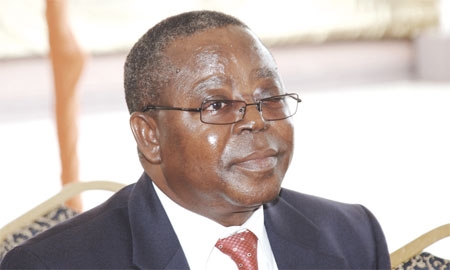The agricultural sector has been described by the government as Ghana’s greatest strength. It employs over half of the workforce, mainly small landholders, and accounts for more than a third of the national GDP. It also generates the majority of the country’s foreign exchange.
As such, the government has policies in place to improve production and to expand areas under cultivation. These are in line with the Millennium Challenge objectives that Ghana signed in 2006, aimed at transforming the agricultural sector through increased mechanization, an improved rural economy, and greater food security throughout the country.
Within the agricultural sector, cocoa plays a leading role. Ghana is the world’s second-largest producer of the chocolate-making bean after Côte d’Ivoire, producing 21% of total global production (635,000 metric tons in the 2009/2010 harvest). Moreover, Ghanaian cocoa is the global benchmark in terms of quality, thanks to strict quality controls throughout the production chain, and, as such, attracts a premium on the international market.
Over 90% of Ghana’s cocoa is grown on small farms (of less than three hectares) in one of six main cocoa-growing areas: Ashanti, Brong Ahafo, Eastern, Volta, Central and Western regions, where the rainfall averages between 39 and 59 inches per year. In these areas, over 3 million Ghanaians (or a quarter of the workforce) work in cocoa cultivation. As a result, and in an effort to protect the continued health of the sector, Ghana’s
Cocoa Board (
COCOBOD), which has been overseeing the industry since 1947, is pushing for the development of rural Ghana as necessary to stop farmers from fleeing to the nation’s cities.
‘WE HAVE A POPULATION OF ABOUT 22 MILLION AND ABOUT A QUARTER OF THIS POPULATION DEPENDS ON COCOA FOR THEIR LIVELIHOOD...
DEVELOPMENT SHOULD BE FOCUSED ON THIS SECTOR’
ANTHONY FOFIE, CEO of COCOBOD
|
“We have a population of about 22 million and about a quarter of this population depends on cocoa for their livelihood. They are mostly in the rural areas where cocoa farming takes place, and they are dependent on cocoa. If a quarter of the population depends on cocoa, development should be focused on this sector,” says Anthony Fofie, CEO of COCOBOD, who adds that new developments in other sectors, such as the recent oil find, may lure rural workers away from their farms.
“We anticipate that labor will move from the cocoa sector to the mining or oil sectors. We need to make sure that we focus on the rural population in Ghana in whatever way we can, targeting those who produce cocoa. We need to develop roads, schools and clinics and provide water for the rural communities.”
As with government policy in other sectors of agriculture, COCOBOD hopes to increase the country’s cocoa cultivation to quantities closer to those of neighboring Côte d’Ivoire, which produces roughly double the cocoa that Ghana currently produces. However, says Mr. Fofie, ensuring that Ghana’s quality levels are not compromised in the process is also a priority.
“We aim to get to 1 million metric tons in the next two to three years. We do not want our quality to be tainted by this increase in volume; we will continue to control quality and make sure that it is up to standard, as we do now,” comments the CEO.
“Our cocoa is a kind of benchmark for clients to determine the quality of cocoa, and that is why it attracts a premium on the international cocoa market. The chocolate manufacturers in the U.S. actually determine the quality aspects, and we have been able to handle this properly because of our quality assurance and controls, right from the farmer to the ports and depots. The last inspection is at the ports, just before shipment.”
COCOBOD is promoting the increase in crop production through larger planted acreage, improved pest control and purchase price incentives. Indeed, as a counter-smuggling move, the government raised the tonnage price paid to farmers last October by 33.3% (all of Ghana’s cocoa, except for the estimated one-tenth of total production that is smuggled out of the country, is sold at fixed prices to the Cocoa Marketing Board).
COCOBOD has over the years successfully fulfilled its mandate of facilitating and promoting the growth and sustenance of the cocoa industry in Ghana. Its success is due to a well-structured set of agencies that work together to provide most of the services and products required by various stakeholders in the industry. COCOBOD and its subsidiaries and divisions are involved in the following operations: marketing of cocoa beans and cocoa products; quality control; transportation; research and training; crop diseases and pest control; and crop rehabilitation projects.

0 COMMENTS